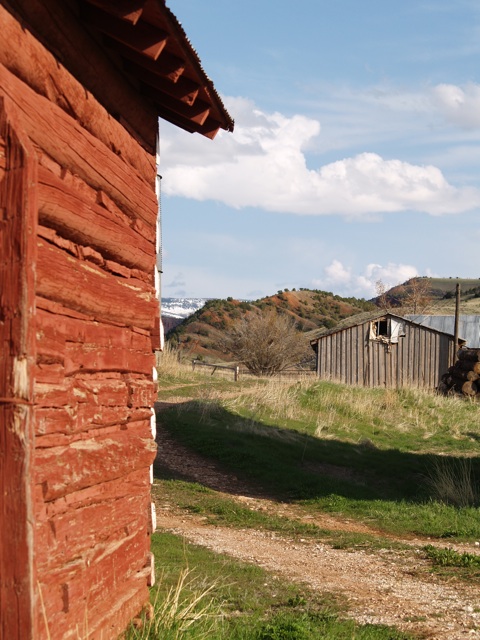I have heard dad tell of how one summer when there was enough rain to keep the grass green and enough water in the buffalo wallows that the sheep herders never had to go to water with their sheep. They also complained that their lambs’ droppings weren’t hardening up the way they liked for traveling to the railroad at the stockyards in Arminto or Lysite on their way to the Omaha market. The railroad loaded out more sheep and cattle here than any place from Billings to Denver.
Dad was very handy with a few simple woodworking tools which was a real asset in many ways on the frontier. He always kept his tools well sharpened. I was to learn the proof of this one afternoon. There was a little shower that afternoon and us kids were playing a game that required a quick dash from one side of the cabin to the other. I took off in a big hurry. What was that sharp feeling on my right wrist? I looked , and behold, I could see right down into an inch and a half cut that even showed a tendon. I had swung my arm and hit dad’s ax sitting there. The cut was on the outside of my wrist, so it wasn’t close to an artery. Mom dressed it and used flour to stop the bleeding. It didn’t hurt much. The scar was very useful to me, as I could always make sure of my left and right hand through school and always when in doubt, I’d check. I think that I should have been left handed.
The large herds of buffalo left their mark where they trailed from the badlands west of the Nowood Creek to the mountain range by the deep trails that they made. You can still see these yet today in the natural saddle where they came through and crossed the Nowood and Canyon Creek and on up the mountain where now the Dry Farm Road goes. You can get a good view of this from where the old Big Trails schoolhouse sits.
This is what inspired Gus Coleman to ask for a post office to be at this location and call it “Big Trails”, which was granted.
I was postmaster there, in 1941, and I have a last day postmark in my possession, a collector’s item.

Another amazing insight into the history of your family. Thank you.
How fortunate you are to have someone who not only remembered, but wrote down what he remembered. And how kind you are to share this with us!
Any chance you could make and narrate a video of any places he
described, if they are still visible?
Thanks for sharing. Love this first person look into the past. It inspires me to write down a few of my own memories.
I have the same question as Elaine. Is that bison trail still visible today?
I’ve wondered what James did as an adult. Looks like his stint as postmaster was fairly brief, what did he go on to do after the Big Trails post office closed? And a century after the Greet family’s first summer on the mountain, can you still see where the (yielding to local custom) buffalo trailed to the mountains? Is the Dry Creek road near the buffalo trial, or did part of the trail become that road?